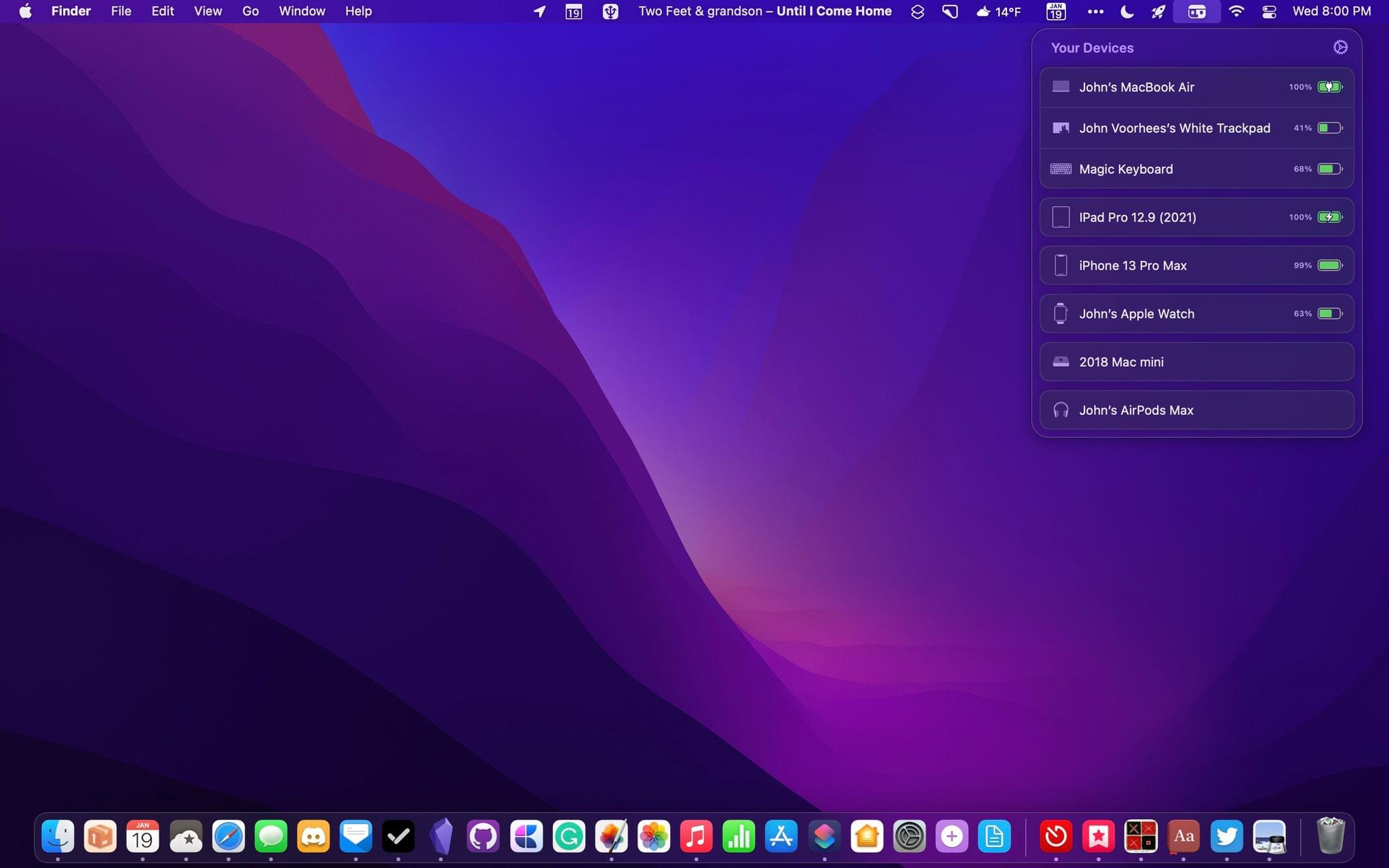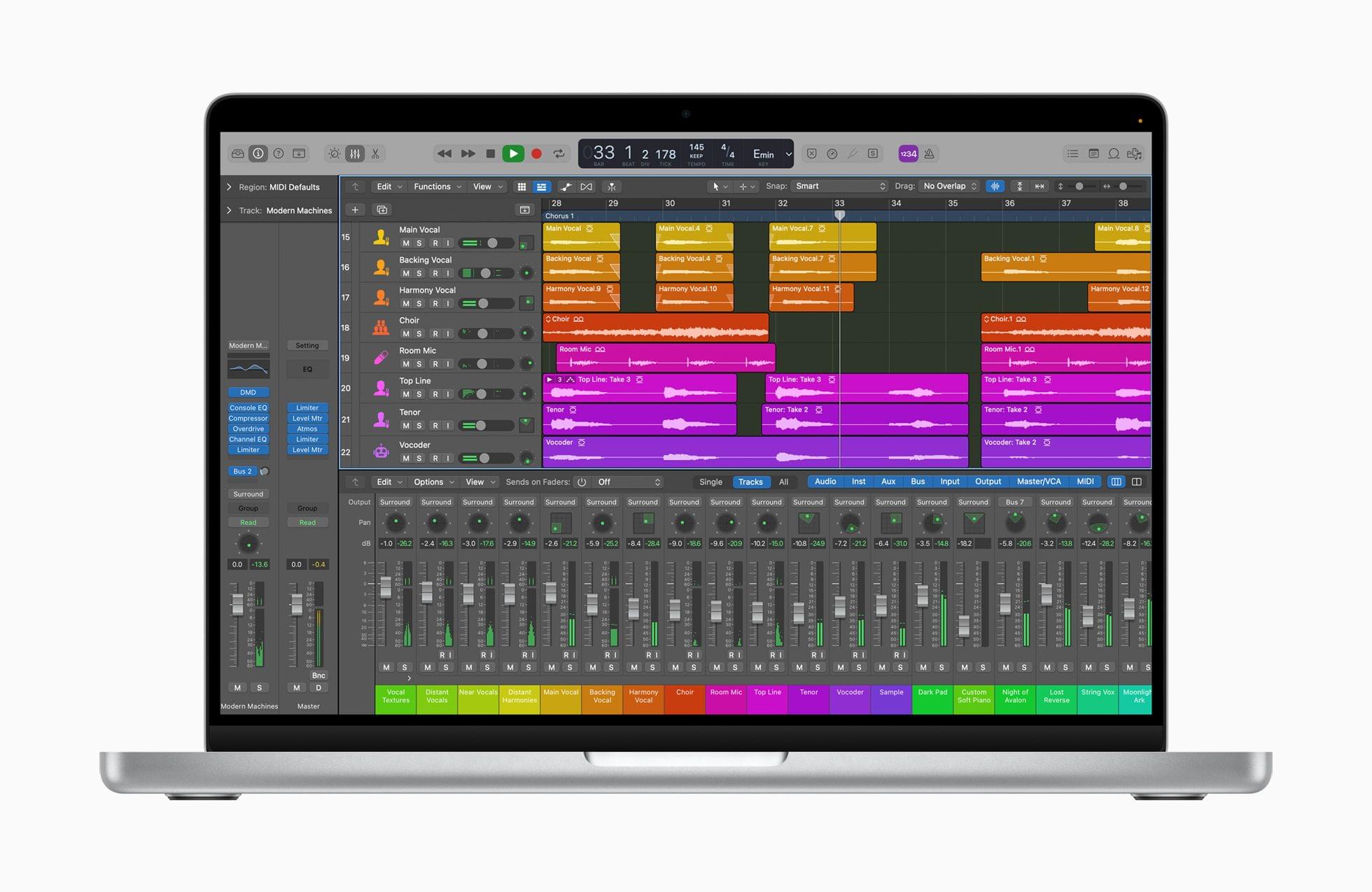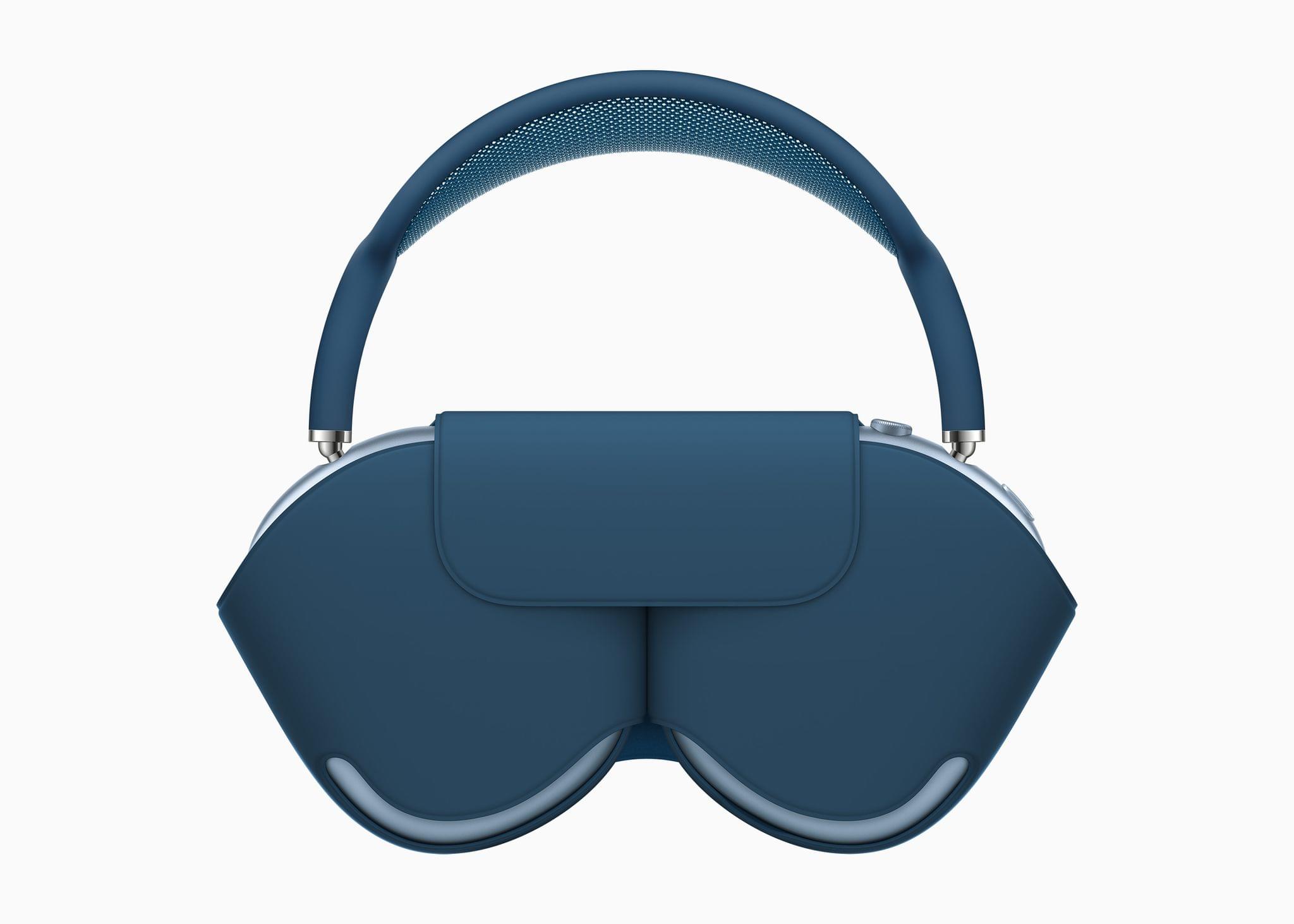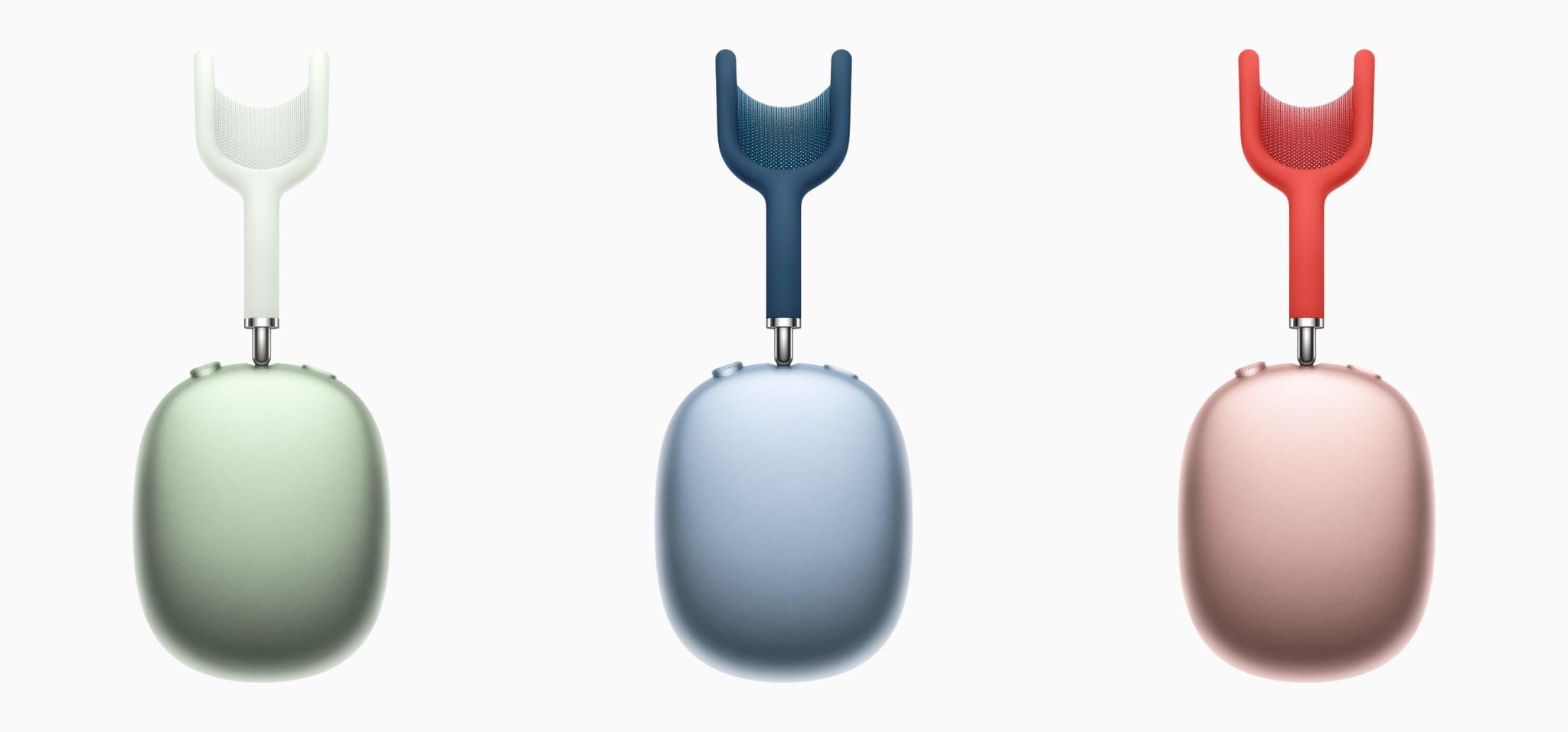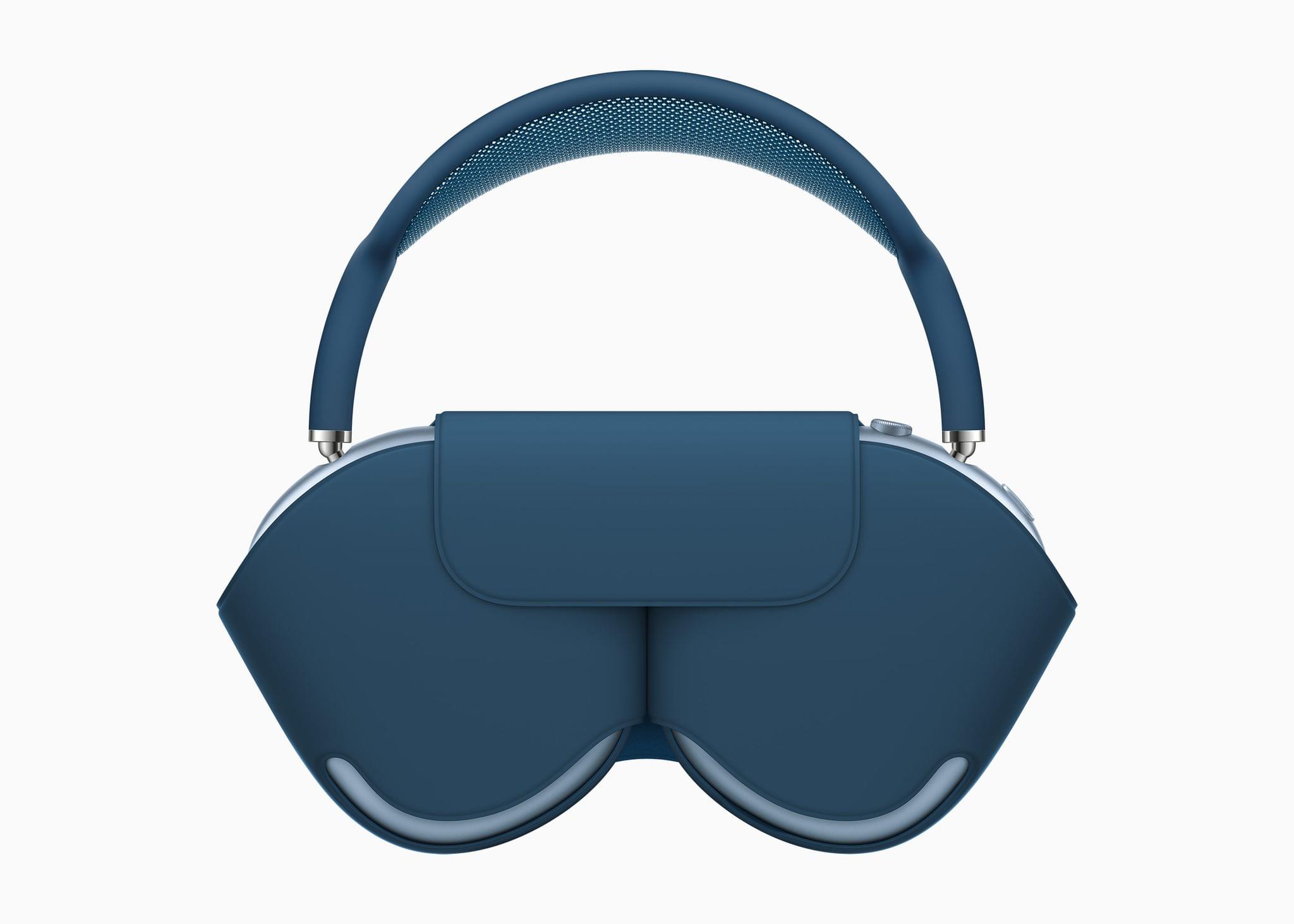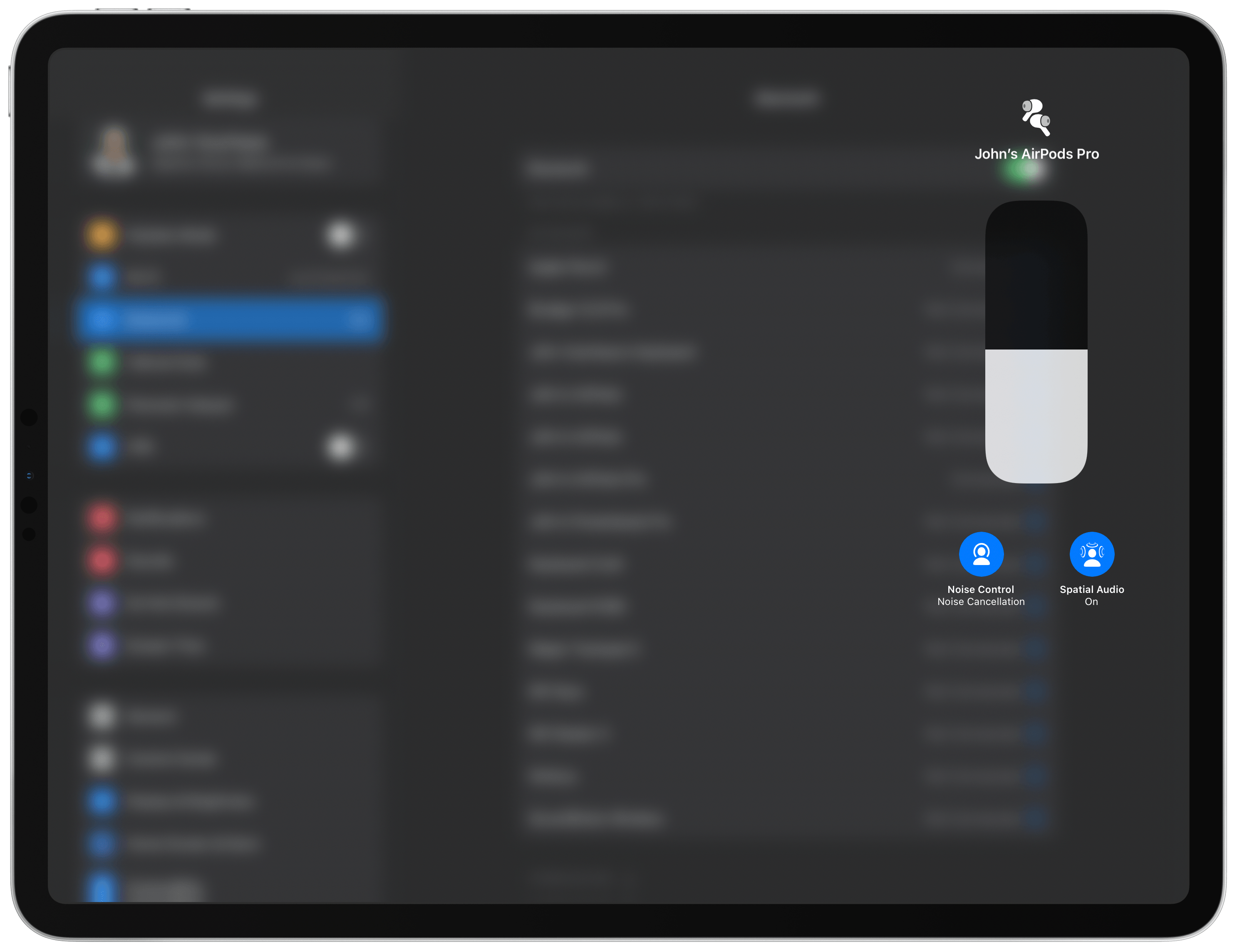Not long ago, Twelve South introduced a new 3-in-1 charger for the iPhone, Apple Watch, and AirPods Pro called the HiRise 3. I’ve used a Belkin 3-in-1 charger on my desk for a few years and love it, but it takes up quite a bit of space. So, when Twelve South recently offered to send me the HiRise 3 to test, I jumped at the chance to check out its more compact design. After using the HiRise 3 for the past few weeks, I’m happy with it overall and think it’s a great choice for most users, but it comes with a couple of limitations that you’ll want to consider before buying one yourself.
Posts tagged with "AirPods"
HiRise 3: Twelve South’s Space-Saving, Three-in-One Charging Solution
AirBuddy 2.5: A Refined Experience That Adds Shortcuts Integration and Other New Features
Today, Gui Rambo released version 2.5 of AirBuddy, his Mac menu bar app for connecting and managing wireless headphones and other devices. AirBuddy has come a long way from its origins as an app that simply connected AirPods and some Beats headphones with your Mac. The app still does that well, but as I wrote about AirBuddy 2.0, the app is a fantastic way to monitor the charge status of a wide variety of devices and hand their connections off from one Mac to another. With the latest version, the app’s core features are faster and more reliable, the UI has been refreshed with a Monterey-friendly design, and there are some excellent new features, too, so let’s dig in.
Apple’s October 2021 Event: All The Small Things
Yesterday, Apple covered a lot of ground quickly, and as usual, more details have emerged in the aftermath of the event. We’ve been combing apple.com, Twitter, and other sources to learn more about the new MacBook Pros, AirPods 3 and more, which we’ve collected below:
MacBook Pro
- According to TechCrunch Editor-in-Chief Matthew Panzarino, the 14” MacBook Pro can fast charge using a Thunderbolt port, while the 16” model only fast charges via MagSafe 3.
- Jason Snell explained on Twitter that the difference is likely the result of the USB-PD charging spec.
- Battery life is a function of what you do with your laptop and The Verge’s Mitchell Clark takes a critical look at Apple’s battery life claims, putting them in perspective
- Apple’s 140W USB-C Power Adapter, which the company sells for $99, is its first GaN charger according to MacRumors’ Joe Rossignol.
- You can purchase a two-meter USB-C to MagSafe 3 cable from Apple for $49
- As MacRumors reported and screenshots in Apple’s press releases suggested, the MacBook Pro’s notch is hidden in full-screen mode by a black bar.
- Speaking of the notch, Apple’s Serenity Caldwell tweeted yesterday that there is new HIG documentation for developers looking to design for the menu bar on the new MacBook Pros.
- As MacRumors’ Juli Clover explains, the MacBook Pro’s HDMI port is HDMI 2.0, which supports a single 4K display at 60Hz, which is disappointing since HDMI 2.1 supports a 120Hz refresh rate.
- There’s a striking resemblance between the new Silver MacBook Pro and the Titanium PowerBook G4
- The M1 Max’s memory bandwidth (400GB/s) is nearyly as fast as the PS5’s (448GB/s)
AirPods 3
- Tim Hardwick at MacRumors reports that listening to spatial audio reduces the life of the battery in the AirPods 3 from 6 to 5 hours
- AirPods 3 require iOS and iPadOS 13 and later.
- As MacRumors noted, Apple has broken out AirPods on its website, giving it a tab that is separate from TV & Home
Everything Else
- The latest betas of iPadOS and macOS have brought back standard Safari tabs, relegating the compact mode to Safari’s preferences as Steve Troughton-Smith discovered
- Originally an exclusive Pro Display XDR accessory, now you too can own an Apple Polishing Cloth suitable for all of your Apple device screens for just $19. Coming soon, ‘Apple Polishing Cloth: The MacStories Review’
- macOS Monterey’s Universal Control is coming later this fall, according to Parker Ortolani
- Likewise, SharePlay and Photos Memories have also been pushed to later this fall in macOS Monterey
Hands On with AirPods’ New Find My Support
Yesterday, an AirPods firmware update was released, enabling new Find My features for Apple’s wireless headphones. Before the update, you could use Find My to see the last spot they were used, but that wasn’t always helpful if you carried them around for a while without opening the case before losing them.
With the firmware update, it’s easier to find misplaced AirPods Pro and AirPods Max. From Find My, choose your AirPods, and tap on the Find button. The app will begin searching for a signal and will suggest moving to a different location if it can’t find anything. In my tests, the time it took to locate the signal of my AirPods Pro varied from around 30-60 seconds when they were nearby.
Once Find My detects a signal, it will tell you whether your AirPods are nearby or far away, allowing you to move around to pinpoint the location. There’s also an option to play a sound through your AirPods to help locate them, which is handy once you’re close to them. However, with my AirPods Pro in their case, the sound playing from my AirPods Pro was understandably a little hard to hear. Also, you don’t have the benefit of the directional arrows you get when searching for an AirTag.
The feature worked well sitting at my desk with my iPhone and AirPods Pro sitting within sight of each other, but that’s not a realistic scenario. To get a better sense of the process, I put my AirPods under a pillow and blanket on our couch in another room on the same floor of our house. I went back to my office, opened Find My, and waited to see if it could pick up the signal roughly 10 meters away in a different room.
After about 30 seconds, Find My picked up a weak signal reporting that my AirPods Pro were far away. I began slowly walking through the house, watching Find My as it updated the distance to my AirPods from far to near and eventually ‘here.’ As I walked around and Find My updated, it provided haptic feedback with increasing frequency as I got closer to my AirPods Pro. I tried playing a sound on the AirPods Pro, but the pillow and blanket made the sound impossible to hear. However, the sound wasn’t really necessary because by the time Find My reported my AirPods as ‘here,’ I was right on top of them anyway, and they were easy to locate.
I also tried putting my AirPods Pro just outside my back door. Find My took a little longer to find a signal, and I had to be a little closer to the AirPods, but even though more walls, Find My picked up a signal.
I’ve only tested the new Find My feature in contrived scenarios so far, but I was impressed with the process. The feature isn’t going to pick up a signal if your AirPods are far away, but more often than not, I’ve simply misplaced my AirPods somewhere at home, and Find My should be perfect for that.
AirPods and HomePods Will Not Support Apple Music’s New Lossless Audio
When Apple announced that Spatial Audio and Lossless Audio are coming to Apple Music, it wasn’t entirely clear from the press release whether Lossless Audio would work with AirPods or HomePods. Since then, Apple has confirmed to T3 that AirPods Pro and AirPods Max do not support Lossless Audio. In a statement to Chris Welch of The Verge, Apple definitively said:
“Lossless audio is not supported on AirPods, any model,” an Apple spokesperson said by email.
AirPods support Spatial Audio, but if you want to listen to Lossless Audio, you’ll need wired headphones, an Apple TV, or a Mac connected to good speakers.
If you were thinking you might be able to get around the wireless limitations of Lossless Audio with a Lightning cable connected to your AirPods Max, you’re out of luck there too, according to Billboard’s Micah Singleton who raised the question with Apple. The Verge’s story confirms what Singleton was told too.
In addition, MacRumors reports it has confirmed from an unnamed source that the original HomePod and HomePod mini do not work with Lossless Audio either.
AirPods Max Power Management Explained by Updated Apple Support Document→
Ever since the release of the AirPods Max there has been confusion about how power management for the headphones works. Apple has clarified the situation with an update to an AirPods Max support page that MacRumors discovered explaining the different power modes and the role the headphones’ case plays.
The bottom line is that there are two low power modes. The first leaves the AirPods Max connected to a device by Bluetooth and discoverable in the Find My app. When you put the headphones into their case, this first low power mode is triggered immediately. If you don’t use the case, the mode is triggered when the AirPods Max have sat undisturbed for five minutes.
A lower-power mode is triggered after 18 hours in the AirPods Max case or 72 hours outside the case. The difference in the time it takes to enter the ultra-low power mode isn’t explained in Apple’s support document, but one possible explanation is that Apple wants the headphones to be discoverable in Find My longer if they are put down outside the case because they are more likely to have been misplaced if not intentionally placed in their case.
Whatever the reason, though, tests conducted by MacRumors have shown that the difference in battery drain in and out of the case is small.
I’m curious about the reasoning behind the choices Apple has made in the AirPods Max’s power management, but mostly, I’m just glad to hear that the difference between using the case or not is negligible. Up to 20 hours of listening time is enough to get me through a few days especially if not using the AirPods Max for a day or two has minimal impact on the headphones’ remaining charge.
AirPods Max First Impressions Roundup
In the wake of this week’s AirPods Max announcement, Apple provided the premium wireless headphones to a handful of YouTubers and media outlets. Nobody had even a full day with the AirPods Max, so none of these are full reviews, but they do provide a closer look at the headphones and some valuable first impressions.
Matthew Panzarino of TechCrunch was impressed with the sound quality but warned of the sturdy design:
There is a tradeoff here that I feel I must mention even in this early review, though: These things are heavy. If you do not like heavy headphones, do not buy the AirPod Max.
All of the reviewers seemed impressed with the sound quality of the headphones, including The Verge’s Nilay Patel:
Sound-wise, I’ve had fun listening to the AirPods Max for a few hours — they’re crisp and bright, with a pleasingly wider soundstage than my Sony headphones, and no distortion at all, even at max volume.
Comparisons to wireless headphones from Sony and Bose were also common, but Marques Brownlee questioned whether that was the right comparison, arguing that contrasting the AirPods Max to higher-end headphones might be more meaningful.
The AirPods Max case was raised as a frequent downside by reviewers who compared to a purse, a bra, and even a butt. Another downside depending on how you might use the AirPods Max is the lack of a cable in the box to connect to airplane entertainment systems and other audio sources. Apple offers a 3.5mm to Lightning cable separately for $35.
Be sure to check out the videos published on YouTube that I’ve linked below too. They’re an excellent way to get a better sense of the design details of the AirPods Max.
I’m curious to read and watch full reviews of the AirPods Max after reviewers have had time to use them for more extended periods and in different settings. For now, though, the first impressions provide a nice introduction to what the AirPods Max can do and what some of their limitations are.
Apple Announces AirPods Max: Wireless Over-Ear Headphones Available Just in Time for the Holidays
Today, Apple revealed the AirPods Max, wireless, over-ear headphones that take advantage of the company’s H1 SoC.
It’s no secret that AirPods have been a big hit. The original model, announced in 2016, has been revised once and in October 2019, Apple released the AirPods Pro adding noise cancellation and transparency mode to the connectivity magic enabled by the company’s H1 SoC. Ever since, rumors have circulated that Apple was developing an over-ear model. With today’s announcements the rumors and speculation have become a reality. Let’s look at what Apple has in store for music fans.
The AirPods Max, which are more expensive than rumored at $549, are initially launching in the US and 25 other countries. Many of the features and specs of the AirPods Max line up with previous rumors and share similarities with Apple’s AirPods Pro. The over-ear headphones feature:
- Apple’s proprietary H1 SoC (one in each ear cup), which provides a stack of features on top of Bluetooth 5.0 that enables wireless connectivity features like fast device switching across multiple devices
- Active noise cancellation
- Transparency mode
- Nine microphones for noise cancellation and other features
- Adaptive EQ
- A Digital Crown that controls volume, play/pause, skipping tracks, and Siri functionality
- Optical and position sensors in the ear cups
- A case detection sensor
- An accelerometer
- A gyroscope in the left ear cup
- Ear cushions attach magnetically and can be replaced for $69
- Lightning connectivity for charging and wired listening with Apple’s optional 3.5mm to Lightning cable
- 20 hours of battery life and 1.5 hours of charge in just 5 minutes of charging
- A Smart Case that puts the AirPods Max into an ultra-low power state
Apple also offers a $35 3.5mm to Lightning cable so the AirPods Max can be used wired.
Regarding the ear cups and Digital Crown, Apple’s press release says:
Each ear cup attaches to the headband through a revolutionary mechanism that balances and distributes ear cup pressure, and allows it to independently pivot and rotate to fit the unique contours of a user’s head. Each ear cushion uses acoustically engineered memory foam to create an effective seal — a critical factor in delivering immersive sound. The Digital Crown, inspired by Apple Watch, offers precise volume control and the ability to play or pause audio, skip tracks, answer or end phone calls, and activate Siri.
Like Apple’s other AirPods models, AirPods Max will also take advantage of automatic device switching. The new over-ear headphones will also feature spatial audio, previously available with the AirPods Pro only.
The AirPods Max, which are available in space gray, silver, sky blue, green, and pink, are over-ear headphones that completely surround users’ ears. The design is striking. According to Apple:
From the canopy to the ear cushions, every part of AirPods Max is carefully crafted to provide exceptional acoustic performance for each user. The breathable knit mesh canopy, spanning the headband, is made to distribute weight and reduce on-head pressure. The stainless steel headband frame provides strength, flexibility, and comfort for a wide variety of head shapes and sizes. Telescoping headband arms smoothly extend and stay in place to maintain the desired fit.
Until AirPods Max are in the hands of users, it’s impossible to know how well they work or how good they sound. Still, I’m glad to see Apple expanding the AirPods lineup. I’ve been spoiled by the unique conveniences of AirPods and AirPods Pro, and with the AirPods Max, I’m eager to see how those features and the new ones announced today translate to an over-ear experience.
AirPods Max are available for pre-order now and will be available beginning Tuesday, December 15th for $549.
Apple has posted two videos on its YouTube channel: one narrated by Evans Hankey, VP of Industrial Design, and Gary Geaves, VP, Acoustics that introduces the AirPods Max and the other an ad titled Journey Into Sound, both of which you can find after the break.
AirPods Firmware Updated with Spatial Audio for Pro Models and Automatic Device Switching for All AirPods
AirPods Pro firmware version 3A283 is currently rolling out to users with two new features: spatial audio and automatic device switching.
You can check the firmware version of your AirPods by connecting them to an iPhone or iPad and going to the Bluetooth section of the Settings app. Tap on the blue info button next to the entry for your AirPods, and scroll down to the Version number near the bottom of the view. There’s no known reliable way to force a firmware update, but my AirPods were sitting on a Qi charger with the case closed in close proximity to my iPhone for what it’s worth.
First announced by Apple at WWDC, spatial audio creates the illusion of sound coming from your iPhone or iPad as you move your head. Apple describes the feature on its iOS 14 preview page as follows:
Spatial audio with dynamic head tracking brings the movie theater experience right to your AirPods Pro.11 applying directional audio filters and subtly adjusting the frequencies each ear receives, spatial audio can place sounds virtually anywhere in space, creating an immersive surround sound experience. Using the gyroscope and accelerometer in your AirPods Pro and your iPhone, spatial audio tracks the motion of your head as well as your device, compares the motion data, and then remaps the sound field so that it stays anchored to your device even as your head moves.
I tested the feature with my iPhone 11 Pro Max and 12.9” iPad Pro, and it worked with both, even though Apple only mentions iPhone models on its iOS 14 preview page. In my tests, I played the latest episode of Ted Lasso, a TV+ show that supports multi-channel audio. I also tried HBO’s Game of Thrones. It’s going to require more testing, but the feature seems to support any multi-channel audio source, regardless of the video streaming provider.
As Ted Lasso played, I turned in my chair and got up, and walked around my office. With spatial audio turned on, which you can do by long-pressing the volume slider in Control Center in the iOS or iPadOS 14 betas, the source of the sound seemed to come directly from my iPad that was sitting on my desk. Next, I switched to watching on my iPhone and moved it as I walked around my office. The entire time the sound seemed to be coming directly from the iPhone.
While testing spatial audio, I moved around far more than I normally would when I watch a show. Even with exaggerated movement, though, the effect felt incredibly real as though the sound were coming from the speakers of the device playing the video. The effect is so well done that I expect in everyday use, like shifting your iPhone from one hand to the other or turning your head for a moment, I’ll forget spatial audio is even engaged.
The update also enables AirPods Pro and second-generation AirPods to switch between devices automatically. When I switched from watching Ted Lasso on my iPad to my iPhone, which was sitting less than a meter from the iPad, my AirPods switched as soon as I opened the TV app. It’s a small touch, but it felt like magic and I can tell it will make a big difference as I switch between devices throughout the day. Apple says the feature allows switching among iPhones, iPads, iPod touches, Macs, and Apple Watches.



